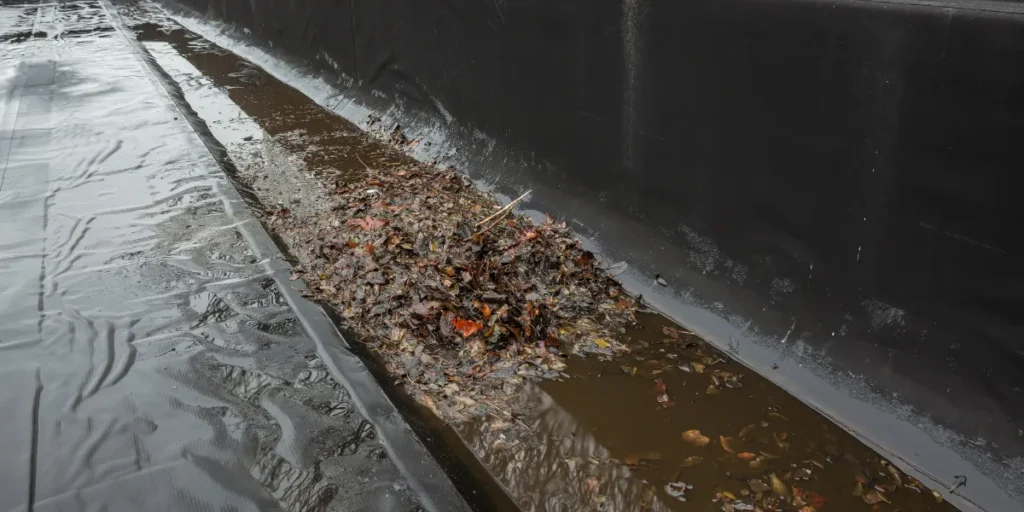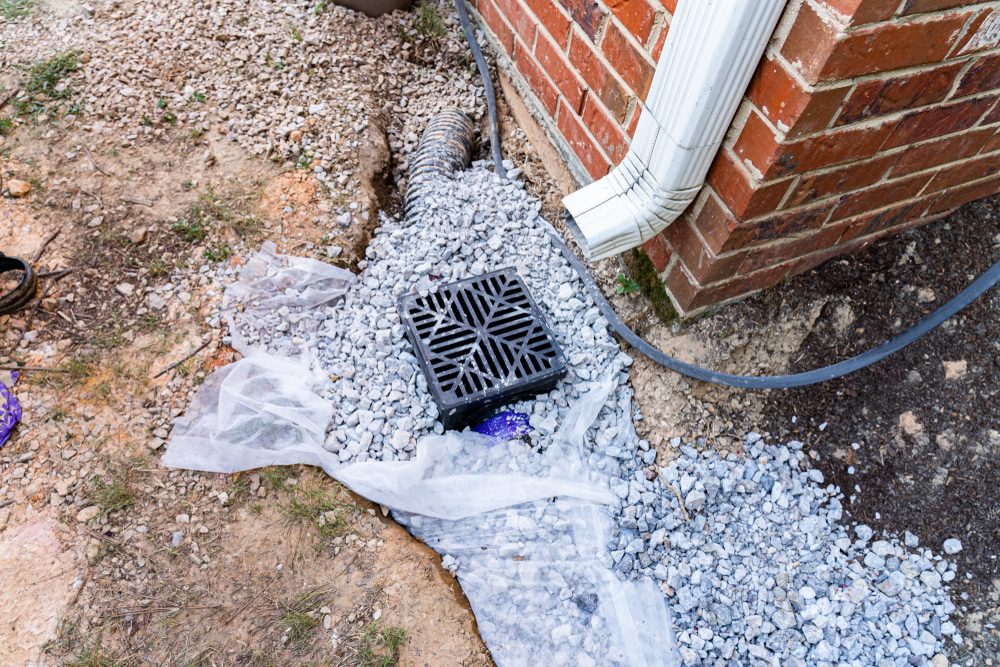How to Unclog a Storm Drain – Avoid Clogged Stormwater Drain
Clogged storm drains can lead to serious problems, especially during heavy rain. If you notice standing water, slow drainage, or unpleasant smells near a drain, it may be clogged.
In this guide, we’ll walk you through the steps to clear a blocked storm drain and offer tips on maintaining your system to prevent future clogs.
With the right tools and knowledge, you can keep your drains flowing smoothly.
How to unclog a storm drain?
To unclog a storm drain, remove debris with a rake or shovel, then use a hose or plunger to clear any remaining blockages. For more serious clogs, contact a professional.
Key Takeaways
- Storm drain clogs can lead to flooding, water damage, and environmental harm.
- Clearing the blockage involves identifying the cause and using the right tools for the job.
- Regular maintenance is crucial to ensure your storm drain stays clear and functions effectively.
Why Do Storm Drains Get Clogged?
Before diving into how to unclog a storm drain, it’s essential to understand what causes clogs in the first place.
Storm drains are designed to channel water away from streets and properties, but over time, they can become obstructed by various debris.
Common Causes of Blockages
- Leaves and branches: Falling leaves are one of the most common causes of blockages, especially during autumn when trees shed their foliage.
- Trash: Plastic bottles, wrappers, and other debris can get swept into the drain and accumulate.
- Sediment buildup: Sand, dirt, and mud can settle in the drain, creating a barrier that restricts water flow.
- Invasive plants: Roots from nearby plants or trees may penetrate the storm drain, causing a partial or full blockage.
Understanding the cause of the clog will help you determine the best way to clear it.
Tools You’ll Need to Unclog a Storm Drain

When attempting to unclog a storm drain, it’s important to have the right tools to get the job done efficiently and safely. Here are some common tools you might need:
1. Gloves and Protective Gear
Wear gloves and, if necessary, other protective gear like boots and goggles. You’ll likely be dealing with wet, dirty conditions, and gloves will keep your hands safe from debris, bacteria, or sharp objects.
2. Drain Snake or Auger
A drain snake or auger is an essential tool for removing deep clogs. The long, flexible tool can reach into the drain and break up blockages that may be further down the pipe.
3. Shovel or Trowel
If the clog is caused by leaves, dirt, or other surface-level debris, you may need a small shovel or trowel to scoop it out of the drain.
4. Pressure Washer or Hose
A high-pressure washer can help blast away built-up dirt or debris stuck in the storm drain. Alternatively, using a garden hose with a high-pressure nozzle can also help dislodge blockages closer to the surface.
Step-by-Step Guide to Unclogging a Storm Drain
Now that you’ve gathered your tools, follow these steps to clear a clogged storm drain efficiently:
Step 1: Assess the Situation
Before you start, determine the severity of the clog. If the storm drain is clogged with leaves or other visible debris, it may be a relatively easy fix. If you suspect the blockage is deep within the pipes, you may need a more advanced tool like a drain snake.
Step 2: Clear Debris from the Surface
Start by removing any visible debris from the top of the drain. This may include leaves, branches, litter, or dirt that have accumulated over time. Use a shovel or your hands (with gloves on) to clear the drain cover and expose the opening.
Step 3: Use a Drain Snake or Auger
If the drain is still clogged after removing visible debris, you may need to insert a drain snake or auger into the storm drain.
Slowly feed the snake into the drain while turning the handle. Once you encounter resistance, try to break up the clog by moving the snake back and forth.
If the clog is made up of roots or solid material, the auger should be able to cut through it.
Step 4: Flush the Drain with Water
Once you’ve loosened the clog, flush the drain with water to ensure that any remaining debris is washed away.
Use a pressure washer if necessary, or attach a hose to the drain and run water through to help clear out any remaining particles.
This will also help check if the drain is flowing smoothly.
Step 5: Inspect the Drainage
After clearing the drain, monitor the water flow to make sure it is draining properly.
If the water is still pooling or draining slowly, you may need to repeat the process or check for deeper blockages further down the pipe.
How to Prevent Future Clogs

While clearing a clogged storm drain is often straightforward, the real challenge lies in preventing clogs from happening in the first place. Here are some preventative measures to consider:
1. Regularly Clean the Drain
Make it a habit to clean the storm drain every few months, especially before the rainy season.
Remove debris such as leaves, dirt, and trash to ensure the system remains clear. If your property has a drain in front of it, take the time to keep it clean to avoid larger problems later.
2. Install a Drain Guard
Consider installing a storm drain guard or filter over the drain. These can help prevent large debris from entering the drain, which makes maintenance much easier.
The guard will catch leaves and trash, preventing them from entering the pipe and causing clogs.
3. Regularly Inspect the Drain System
Schedule inspections of your entire storm drain system to look for potential issues like tree root infiltration, cracks in the pipes, or other blockages that may not be immediately visible.
A professional drain technician can help assess the condition of your system and identify potential problems before they become serious.
Frequently Asked Questions
1. Can I unclog a storm drain myself?
Yes, you can unclog a storm drain yourself using tools like a drain snake, pressure washer, or a shovel to remove debris. For deep blockages, consider hiring a professional.
2. How often should I clean my storm drain?
It’s recommended to clean your storm drain every few months, especially before heavy rainfall. Regular cleaning can prevent significant blockages and flooding.
3. What are the signs of a clogged storm drain?
Signs of a clogged storm drain include standing water, slow drainage, foul odours, or water pooling around the drain. These symptoms indicate the need for immediate attention.
Conclusion
Clogged storm drains are a common issue that can lead to flooding, property damage, and environmental harm if not addressed promptly.
By following the steps outlined in this guide, you can effectively clear your storm drain and keep it functioning smoothly.
Regular maintenance and preventative measures are crucial to ensuring that your storm drains continue to work efficiently, particularly during heavy rainstorms in areas like California or other states with frequent weather fluctuations.
If you’re ever in doubt or dealing with a more severe clog, don’t hesitate to call in a professional to avoid more costly damage down the line.
